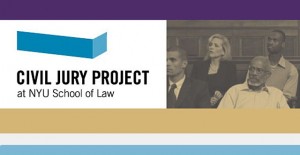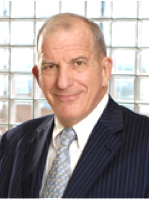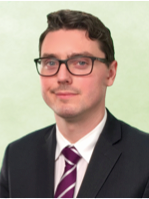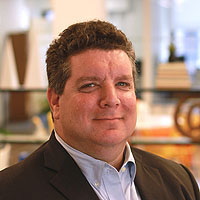Source of article DOAR Litigation Consulting.


Stephen Susman
In a series of articles on Law 360, Steve Susman, Richard Lorren Jolly and DOAR Jury Consultant Roy Futterman provide the Civil Jury Project’s proposed innovations for improved jury trials:
This is the eighth in a series of articles on the Civil Jury Project’s proposed innovations that can resuscitate the American jury trial. Each week we offer a summary of a different innovation, the legal support for its use, and empirical studies on its popularity. Each innovation has been proposed by academics and practitioners, implemented by state and federal judges, and is not prohibited in most jurisdictions. Most importantly, each innovation addresses the main criticisms leveled at juries — that they are too long, too expensive, too unpredictable — and is designed to make trial by civil jury a more desirable form of dispute resolution.
Innovation Eight: Matching Expert Testimony

Richard Lorren Jolly
In this innovation, we answer the question that is on most legal analysts’ minds: What if both sides’ expert witnesses sat in a hot tub discussing the case while a jury watched?
One of the most common objections to jury trials is that lay jurors are incapable of understanding expert testimony on complex issues, and that they are often persuaded by style more than substance. Our current proposed innovation allows both sides’ experts to be matched by subject and to testify back-to-back. Alternatively, in another version of the same idea, it allows concurrent expert testimony, wherein both of the matched experts engage in a dialogue, testifying and answering questions at the same time. The goal is to aid juror comprehension by allowing jurors to more easily compare the testimonies of “battling” experts, as compared with the current practice wherein experts may testify days or even weeks apart. In so doing, matching experts can make jury trials more easily understood by jurors and thus more predictable and accurate.
Both of these expert matching methods are uncommon in the United States, but presenting expert testimony concurrently has been widely practiced in Australia since the 1970s. There, experts sit together and both testify and answer questions at the same time as if they were all sitting around talking, hence the technical name: Australian hot-tubbing. Some have proposed importing the practice. Indeed, allowing experts to testify concurrently is one of the methods suggested in Wigmore’s Treatise on Evidence to improve the use of expert testimony. Nothing prevents American courts from doing so. Federal Rule of Evidence 611 gives trial courts “control over the mode and order of examining witnesses and presenting evidence,” and nothing in our review suggests laws or rules in any jurisdiction that would prohibit some form of this practice.

Roy Futterman, Ph.D.
Because the practice is rare, there is little empirical data on it from the United States. Indeed, according to a national survey conducted by the Civil Jury Project and the American Society of Trial Consultants, just 21.7 percent of respondents had experience with back-to-back experts. In Australia, however, numerous studies have shown that expert matching methods like these have a number of beneficial effects. They include enhancing communication, comprehension and decision-making, as well as saving time, money and institutional resources.
There is no reason to suspect that the same benefits would not occur in the United States. As we have previously discussed, it is difficult for jurors to put together the crucial information in a case when it is spread out and interrupted by testimony on other issues. Putting relevant testimony in front of a jury in tighter chunks would help jurors comprehend what is often the most difficult information in a case. There is a clear benefit to all parties and the court to assisting jurors in understanding the experts’ arguments for both sides of each issue. Allowing competing experts to settle the points on which they agree, and quickly move onto the controversy, will also save resources. There is thus no need for lawyers to reintroduce the various issues and opinions throughout the trial.
Next week, we will present our final innovation and perhaps one of the most controversial: Allowing jurors to discuss the case before final deliberation.
Stephen D. Susman is a founder of Susman Godfrey LLP and the executive director for The Civil Jury Project at NYU School of Law.
Richard Loren Jolly is an attorney and research fellow at the Civil Jury Project.
Roy Futterman, Ph.D. is an adviser to the Civil Jury Project. He is a jury consultant, clinical psychologist and director at DOAR, Inc., as well as a columnist for Law360.
The post Innovating For Wise Juries: Matching Experts appeared first on DOAR.
